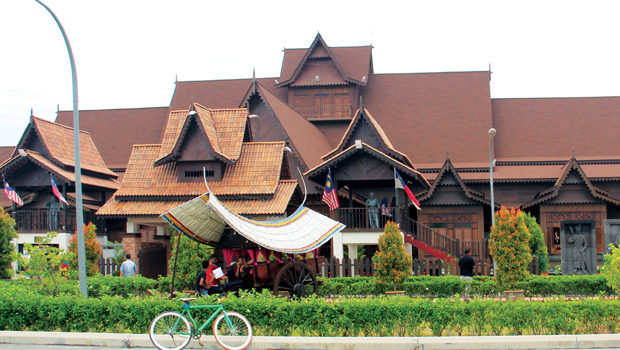
Hang Tuah Village
Words by Harny Abu Khair
A tale of friendship, bravery, unwavering loyalty and betrayal. These five legendary warriors are believed to have served under the sixth Sultan of Melaka, Sultan Mansur Shah. According to local folklore, these five were accorded the title ‘Admiral’ by the Sultan and their duties were primarily to protect the Sultan from harm as they were skilled in Silat, a Malay martial art.

Their names were Hang Tuah, Hang Jebat, Hang Kasturi, Hang Lekir and Hang Lekiu. Of the five, the most prolific was Hang Tuah and owned a magical weapon – a keris called Taming Sari. The Taming Sari is now in the possession of the Perak palace as part of the state’s regalia. Perkampungan Hang Tuah or Hang Tuah Village in Kampung Duyong is the latest historical attraction and just around eight kilometres from Melaka Sentral. Visitors can either take a taxi or drive here which takes around 15 to 20 minutes.
The Hang Tuah Village sits on a 10-hectare land and comprises of five Melaka Malay houses along with mock palace known as the Hang Tuah Centre. The cost of this complex is said to be around RM34 million and has been open to visitors since 2013.

Statue of the 5 legendary warriors
Kampong Duyong is believed to be the birthplace of Admiral Hang Tuah, a woodcutter born to Hang Mahmud and Dang Merdu Wati. The highlights of Hang Tuah are many.
He was the one who cunningly kidnapped Tun Teja, a Pahang nobility and was even indicated as the go-between for the Sultan who had eyes for Puteri Gunung Ledang. The Majapahit Javanese-Hindu princess turned down his request by setting seven impossible conditions for the Sultan to fulfil.

I started my tour at the main complex. The entrance ticket for adult is RM5 and children RM3. The grand complex is where visitors can learn the silat movements and traditional Malay costumes through interactive audio visual.
Inside the village are houses named after the five warriors is an open space that can be used for Silat training and other cultural activities. The houses are filled with exhibits and artifacts such as keris’, paintings, costumes and clothes of bygone days. Items displayed are for sale as well.




For those who are into some mystic and brave enough, stepped into Rumah Hang Lekiu to learn about the ghost and ghouls or learn about the unseen and the traditional alternative medicine.
Not far from the village is another important legacy, the Perigi Hang Tuah (Hang Tuah well). It is said that the water remains clear and never dries up even during long periods of drought.
Do also drop by at the Balai Adat, an important community hall used by the Malays to host various cultural activities.
Now, it is used to showcase artworks by local artists. According to its coordinator Muhammad Syafi q Zamrid, there are plans to introduce homestays from September September onwards within the Balai Adat and other traditional houses nearby.

Hang Tuah Well
“There will be several activities organised such as traditional performances and Malam Berinai (The Henna Night) where Malay brides will henna their fingers on the night before the wedding,’ he said.
Presently, the hall is also available for couples looking for an authentic traditional Malay wedding. No chairs or tables will be provided, so guests will have to sit on the ‘mengkuang’ mats to enjoy the wedding feast during the Makan Beradat.
Do visit the village whenever you are in Melaka. Although it is still close to the city centre, the place is quiet and serene. Once you are done visiting all the houses, why not enjoy the view at the nearby Duyong River.
It is said that the authority has plans to beautify the river and turn it into a recreational area. Future plans include river cruise boats to bring visitors from the jetty at Taman Rempah to the village.
For more information, contact Institut Seni Malaysia Melaka at 06-2860453 or Muhamad Syafi q Zamrid at 017-6744099 or the Melaka Museum Corporation at 06-333 3333 (http://www.perzim.gov.my/ms/).



 Previous Article
Previous Article Next Article
Next Article